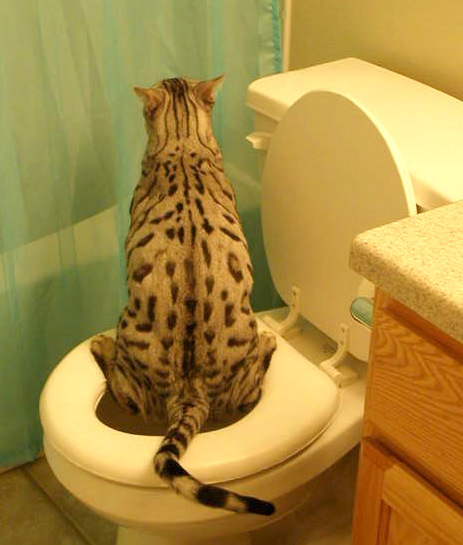The author is making a number of great pointers relating to How to Dispose of Cat Poop and Litter Without Plastic Bags overall in this great article underneath.

Intro
As cat proprietors, it's necessary to be mindful of how we throw away our feline friends' waste. While it might seem convenient to purge feline poop down the toilet, this practice can have detrimental effects for both the atmosphere and human health.
Ecological Impact
Purging feline poop presents hazardous pathogens and bloodsuckers right into the supply of water, posturing a significant threat to aquatic communities. These impurities can negatively affect aquatic life and concession water quality.
Health and wellness Risks
Along with ecological problems, flushing pet cat waste can additionally position health dangers to human beings. Cat feces might contain Toxoplasma gondii, a parasite that can cause toxoplasmosis-- a possibly extreme illness, particularly for expectant ladies and people with damaged body immune systems.
Alternatives to Flushing
The good news is, there are more secure and a lot more accountable means to get rid of feline poop. Think about the following choices:
1. Scoop and Dispose in Trash
One of the most common technique of throwing away feline poop is to scoop it into an eco-friendly bag and throw it in the trash. Make sure to make use of a devoted trash inside story and dispose of the waste quickly.
2. Use Biodegradable Litter
Select eco-friendly pet cat clutter made from products such as corn or wheat. These clutters are eco-friendly and can be securely disposed of in the trash.
3. Hide in the Yard
If you have a backyard, take into consideration hiding feline waste in an assigned area far from veggie gardens and water sources. Make certain to dig deep adequate to avoid contamination of groundwater.
4. Install a Pet Waste Disposal System
Invest in a pet dog waste disposal system specifically made for feline waste. These systems use enzymes to break down the waste, lowering odor and ecological impact.
Verdict
Accountable pet dog ownership expands beyond supplying food and shelter-- it likewise entails proper waste monitoring. By avoiding flushing feline poop down the commode and choosing alternate disposal approaches, we can lessen our environmental footprint and shield human health.
Why Can’t I Flush Cat Poop?
It Spreads a Parasite
Cats are frequently infected with a parasite called toxoplasma gondii. The parasite causes an infection called toxoplasmosis. It is usually harmless to cats. The parasite only uses cat poop as a host for its eggs. Otherwise, the cat’s immune system usually keeps the infection at low enough levels to maintain its own health. But it does not stop the develop of eggs. These eggs are tiny and surprisingly tough. They may survive for a year before they begin to grow. But that’s the problem.
Our wastewater system is not designed to deal with toxoplasmosis eggs. Instead, most eggs will flush from your toilet into sewers and wastewater management plants. After the sewage is treated for many other harmful things in it, it is typically released into local rivers, lakes, or oceans. Here, the toxoplasmosis eggs can find new hosts, including starfish, crabs, otters, and many other wildlife. For many, this is a significant risk to their health. Toxoplasmosis can also end up infecting water sources that are important for agriculture, which means our deer, pigs, and sheep can get infected too.
Is There Risk to Humans?
There can be a risk to human life from flushing cat poop down the toilet. If you do so, the parasites from your cat’s poop can end up in shellfish, game animals, or livestock. If this meat is then served raw or undercooked, the people who eat it can get sick.
In fact, according to the CDC, 40 million people in the United States are infected with toxoplasma gondii. They get it from exposure to infected seafood, or from some kind of cat poop contamination, like drinking from a stream that is contaminated or touching anything that has come into contact with cat poop. That includes just cleaning a cat litter box.
Most people who get infected with these parasites will not develop any symptoms. However, for pregnant women or for those with compromised immune systems, the parasite can cause severe health problems.
How to Handle Cat Poop
The best way to handle cat poop is actually to clean the box more often. The eggs that the parasite sheds will not become active until one to five days after the cat poops. That means that if you clean daily, you’re much less likely to come into direct contact with infectious eggs.
That said, always dispose of cat poop in the garbage and not down the toilet. Wash your hands before and after you clean the litter box, and bring the bag of poop right outside to your garbage bins.
https://trenchlesssolutionsusa.com/why-cant-i-flush-cat-poop/

Do you enjoy reading about Can You Flush Cat Poo or Litter Down the Toilet?? Put feedback below. We'd be delighted to know your opinion about this page. We hope that you visit us again in the near future. Sharing is caring. One never knows, you may very well be doing someone a favor. We value reading our article about Can You Flush Cat Poo or Litter Down the Toilet?.
Call Us Today
Comments on “Potential Issues of Flushing Cat Poop Down Your Toilet - Safeguard Your Pipes”